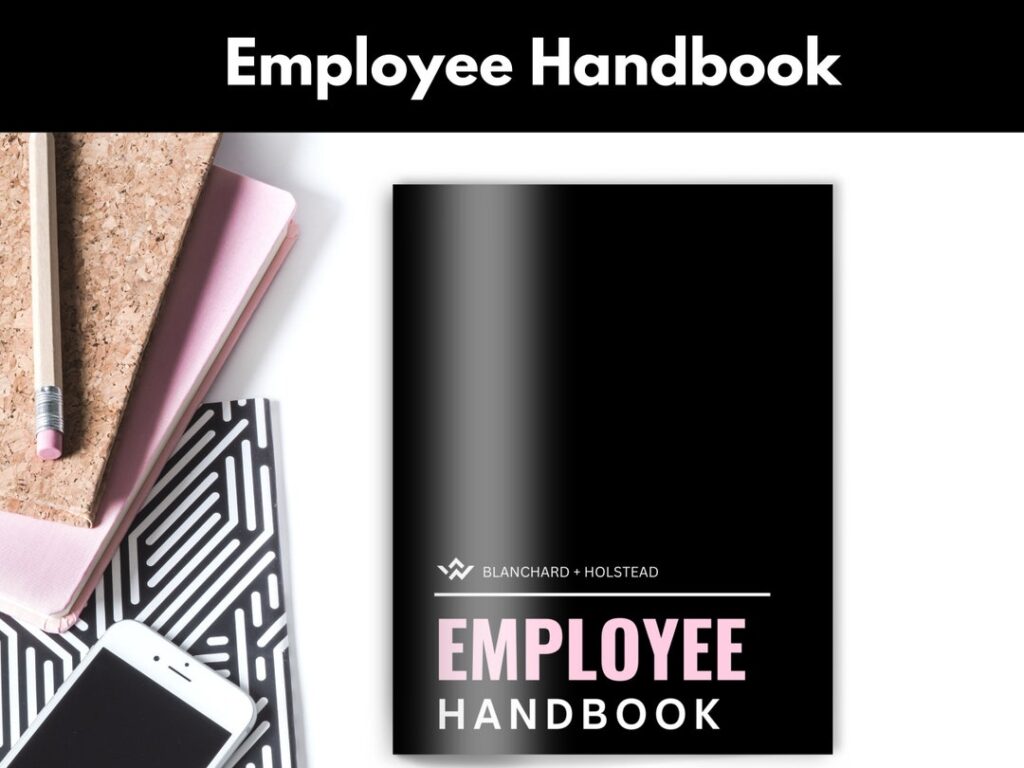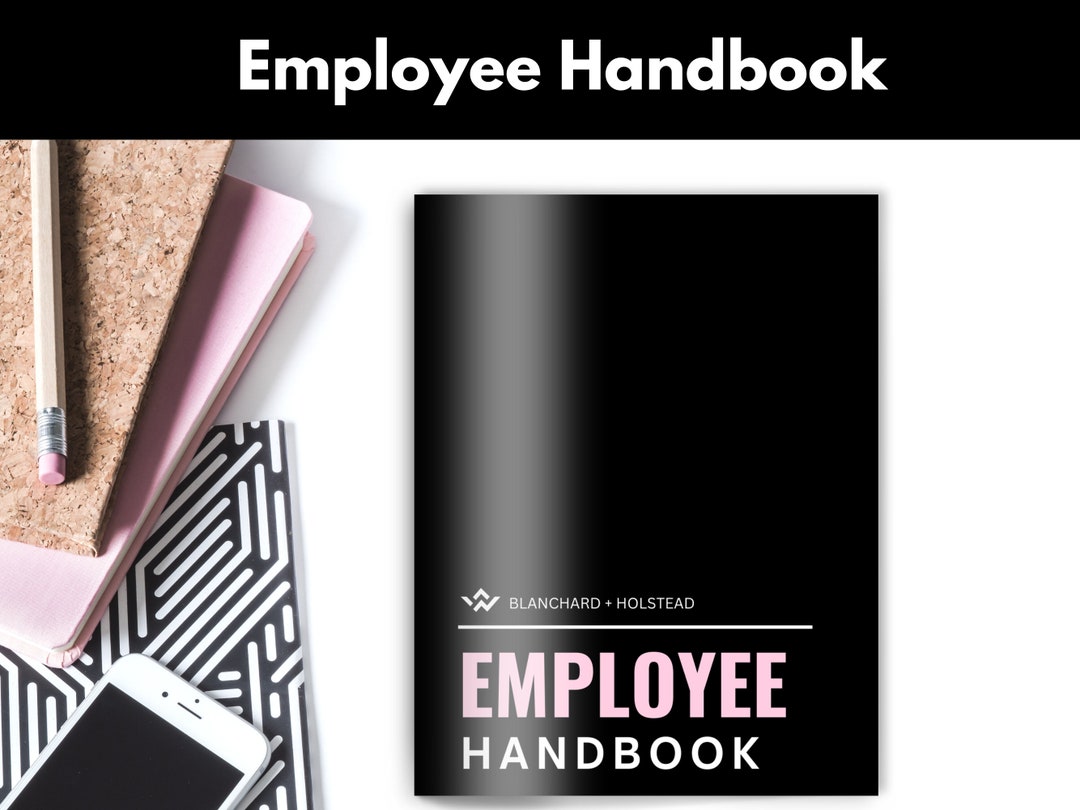
Crafting a Comprehensive Company Staff Handbook: A Step-by-Step Guide
A company staff handbook is more than just a document; it’s the cornerstone of a well-organized and compliant workplace. It serves as a central repository for company policies, procedures, and expectations, ensuring that all employees are aligned and informed. In today’s dynamic business environment, a well-crafted company staff handbook is essential for mitigating risks, fostering a positive work culture, and promoting consistent practices. This guide provides a step-by-step approach to creating a company staff handbook that meets the specific needs of your organization.
Why Your Company Needs a Staff Handbook
Having a company staff handbook offers several key benefits:
- Clarity and Consistency: It ensures that all employees understand company policies and procedures, reducing ambiguity and promoting consistent application.
- Legal Protection: A well-written handbook can help protect the company from legal challenges by clearly outlining employee rights and responsibilities.
- Onboarding and Training: It serves as a valuable resource for new employees, providing them with essential information about the company and its expectations.
- Employee Relations: It helps to establish clear expectations for employee behavior, promoting a positive and productive work environment.
- Risk Management: It can help to mitigate risks by outlining policies related to safety, security, and compliance.
Step-by-Step Guide to Creating Your Company Staff Handbook
Step 1: Define the Scope and Purpose
Before you start writing, clearly define the scope and purpose of your company staff handbook. What topics will it cover? What are the key objectives you want to achieve? Consider the specific needs of your organization and the types of employees you have. This foundational step will guide the entire process.
Step 2: Gather Information and Resources
Collect all relevant information and resources, including existing company policies, legal requirements, and industry best practices. Consult with legal counsel and HR professionals to ensure that your handbook is compliant and accurate. This research phase is crucial for building a solid foundation for your company staff handbook.
Step 3: Structure Your Handbook
Organize your company staff handbook into logical sections and chapters. A typical handbook might include the following:
- Introduction: A welcome message from the CEO or other senior leader, outlining the company’s mission, values, and culture.
- Company Information: A brief overview of the company’s history, structure, and business operations.
- Employment Policies: Detailed information on topics such as equal opportunity employment, anti-discrimination, harassment prevention, and employee classifications.
- Compensation and Benefits: Information on pay schedules, overtime, performance reviews, health insurance, retirement plans, and other benefits.
- Working Conditions: Policies related to work hours, attendance, leave, remote work, and workplace safety.
- Employee Conduct: Expectations for employee behavior, including dress code, confidentiality, social media usage, and conflict of interest.
- Technology and Communication: Guidelines for using company technology, including email, internet, and social media.
- Disciplinary Procedures: A clear outline of the disciplinary process, including warnings, suspensions, and termination.
- Resignation and Termination: Procedures for resigning from the company and information on termination policies.
- Acknowledgment: A form for employees to sign, acknowledging that they have read and understand the company staff handbook.
Step 4: Write Clear and Concise Policies
Use clear, concise language to write your policies. Avoid jargon and legal terms that employees may not understand. Focus on providing practical guidance and examples to help employees understand how the policies apply in real-world situations. Each policy should clearly state the purpose, scope, and consequences of non-compliance. The goal is to create a company staff handbook that is easy to read and understand.
Step 5: Review and Revise
Once you have drafted your company staff handbook, have it reviewed by legal counsel, HR professionals, and key stakeholders. Solicit feedback and make revisions as needed. Ensure that the handbook is consistent with company values, legal requirements, and industry best practices. This review process is essential for ensuring the accuracy and effectiveness of your company staff handbook.
Step 6: Distribute and Communicate
Distribute the company staff handbook to all employees and provide training on its contents. Make the handbook easily accessible, both in print and online. Communicate any updates or changes to the handbook in a timely manner. Emphasize the importance of the handbook and encourage employees to refer to it regularly. Consider including a quiz or assessment to ensure comprehension.
Step 7: Update Regularly
The business environment is constantly changing, so it’s important to update your company staff handbook regularly. Review the handbook at least annually and make revisions as needed to reflect changes in company policies, legal requirements, and industry best practices. Communicate any updates to employees and provide additional training as necessary. A well-maintained company staff handbook is a valuable asset for any organization.
Key Sections to Include in Your Company Staff Handbook
Equal Opportunity Employment
This section should clearly state the company’s commitment to equal opportunity employment and non-discrimination. It should outline the protected characteristics under federal, state, and local laws, such as race, color, religion, sex, national origin, age, disability, and genetic information. Include a statement that prohibits discrimination and harassment based on these characteristics. This section is crucial for fostering a diverse and inclusive workplace. [See also: Diversity and Inclusion Policies]
Harassment Prevention
This section should define harassment and provide examples of prohibited behavior. It should outline the company’s policy on harassment prevention and the procedures for reporting and investigating harassment complaints. Emphasize the company’s commitment to creating a safe and respectful work environment. Provide training to employees on harassment prevention and bystander intervention. A strong harassment prevention policy is essential for protecting employees and mitigating legal risks. The company staff handbook should make this clear.
Compensation and Benefits
This section should provide detailed information on employee compensation and benefits, including pay schedules, overtime, performance reviews, health insurance, retirement plans, and other benefits. Clearly explain the eligibility requirements for each benefit and the procedures for enrolling. Provide contact information for employees to ask questions about their compensation and benefits. Transparency in compensation and benefits is essential for attracting and retaining top talent. This section of the company staff handbook is often heavily consulted.
Leave Policies
This section should outline the company’s policies on various types of leave, such as vacation, sick leave, personal leave, and family and medical leave. Clearly explain the eligibility requirements for each type of leave and the procedures for requesting leave. Ensure that the leave policies comply with federal, state, and local laws. Provide examples of how leave policies apply in real-world situations. Clear and comprehensive leave policies are essential for supporting employees and promoting work-life balance. The company staff handbook should detail these policies comprehensively.
Code of Conduct
This section should outline the company’s expectations for employee behavior, including dress code, confidentiality, social media usage, and conflict of interest. Clearly define prohibited behavior and the consequences of non-compliance. Emphasize the importance of ethical conduct and integrity. Provide examples of ethical dilemmas and how employees should respond. A strong code of conduct is essential for promoting a positive and productive work environment. The company staff handbook is the ideal place for this code.
Technology Usage
This section should provide guidelines for using company technology, including email, internet, and social media. Outline the company’s policy on acceptable use of technology and the consequences of misuse. Emphasize the importance of protecting company data and maintaining confidentiality. Provide training to employees on cybersecurity and data privacy. Clear technology usage guidelines are essential for protecting the company’s assets and mitigating risks. The company staff handbook should cover this in detail.
Common Mistakes to Avoid
- Vague Language: Use clear, concise language and avoid jargon.
- Inconsistencies: Ensure that the handbook is consistent with company policies and practices.
- Legal Non-Compliance: Consult with legal counsel to ensure that the handbook complies with all applicable laws.
- Lack of Updates: Update the handbook regularly to reflect changes in company policies and legal requirements.
- Poor Communication: Communicate the contents of the handbook to employees and provide training as needed.
Conclusion
Creating a comprehensive company staff handbook is a significant undertaking, but it’s an investment that pays off in the long run. By following the steps outlined in this guide, you can create a handbook that meets the specific needs of your organization and promotes a positive, productive, and compliant workplace. Remember to review and update your handbook regularly to ensure that it remains relevant and effective. A well-crafted company staff handbook is an invaluable asset for any organization, providing clarity, consistency, and legal protection.

